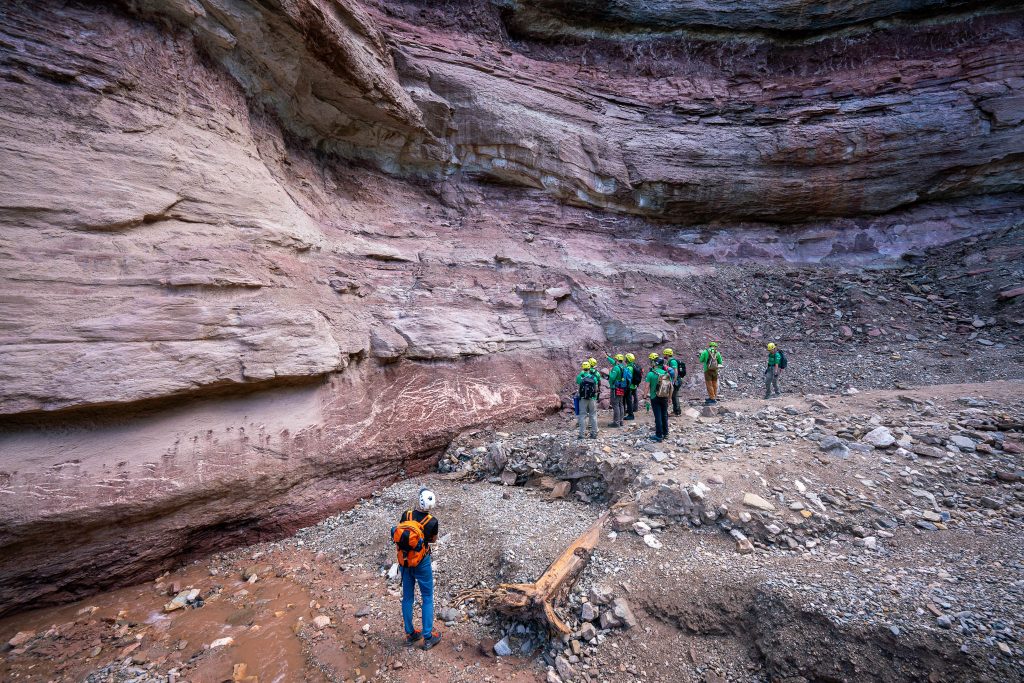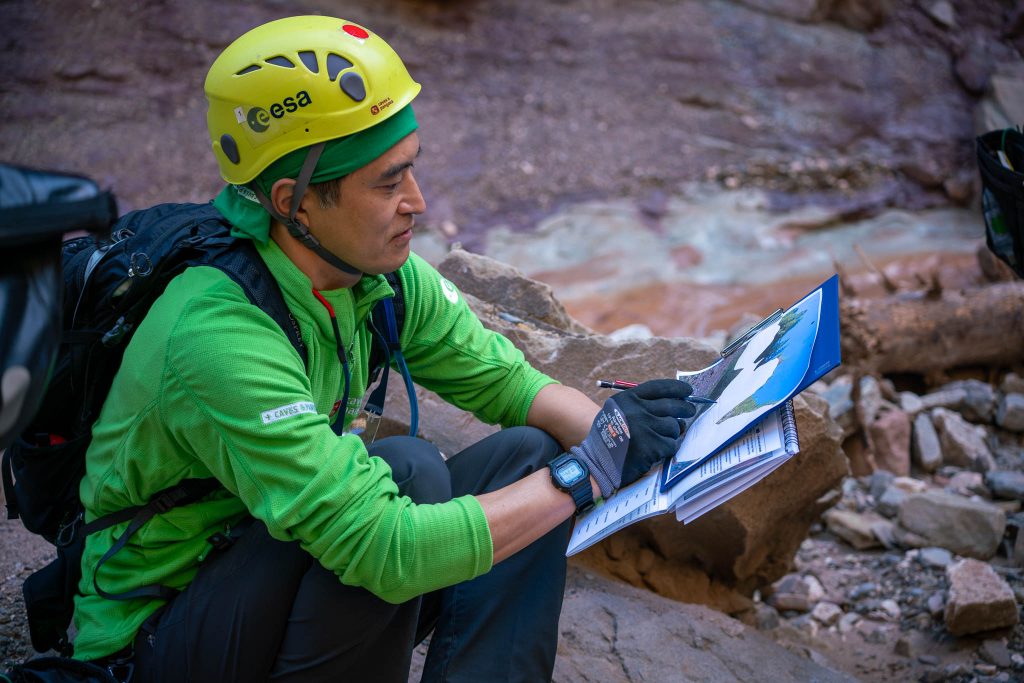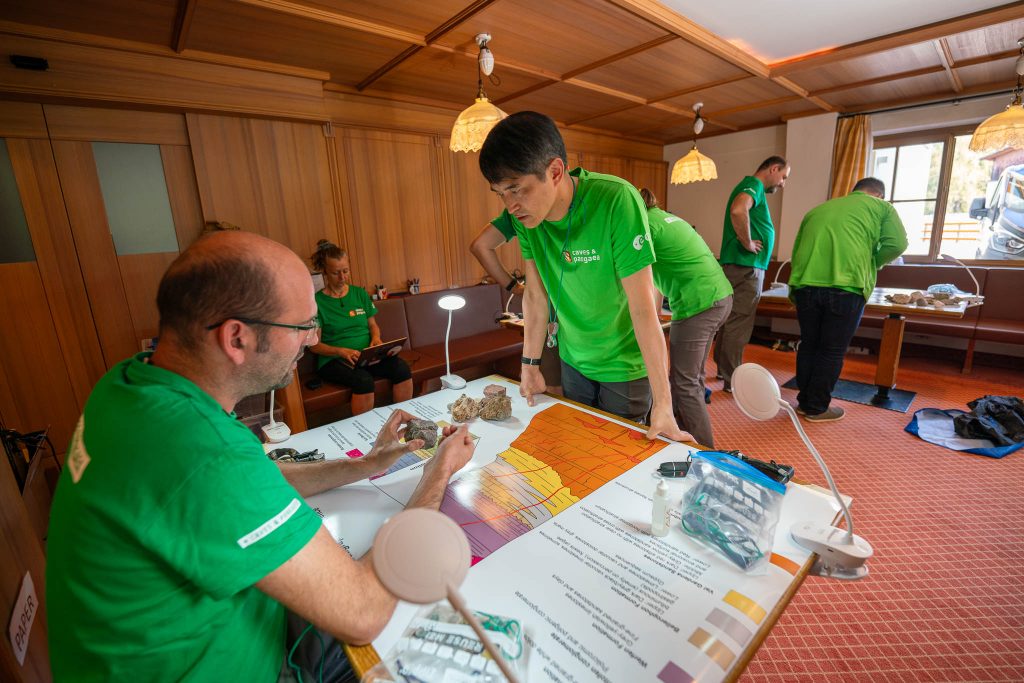Takuya welcomes the new challenge. He is the first Japanese astronaut to join ESA’s geology course PANGAEA, now running its sixth edition. Just one week into training, everything signifies a renewed fascination for the study of Earth – from the way he uses geological terms to how he describes the landscapes of the Italian Dolomites.
The first stop during the course led him to the Bletterbach canyon, a geological playground that, to the trained eye, displays similarities with Mars. “The valley is ideal to learn basic geology – there are so many processes we can observe in just one place and at a large scale!” Takuya says.

The astronaut from Japan’s space agency JAXA has spent 115 days on the International Space Station, nine days on the Aquarius underwater lab for NASA’s NEEMO expedition and six days exploring the underground during ESA’s CAVES adventure.
“PANGAEA is an entirely different experience that allows me to enhance my exploration skills. Although not physically demanding, the training is intense, and very practical and academic at the same time,” he explains.
From space to the ground
“On the International Space Station, I carried out a lot of experiments following instructions from the ground. However, when we land on the Moon, things are going to be different. We will need to be lunar surface specialists and become the eyes of the scientists on Earth,” explains Takuya.

The PANGAEA training takes the rookie geologist from theory-packed lessons to the wild outdoors in the search for rocks that could tell him how the region formed millions of years ago. In addition to creating on-the-spot landscape sketches, he ventured to Mars through virtual reality, allowing him to delve into the geology of the Red Planet from the perspective of a rover.
Moon or Mars?
If Takuya had the opportunity, he would choose to go to the Moon.
“The diversity of Mars attracts me from a geologicaI point of view, but I think the Red Planet is a destination for the next generation of astronauts, not for me or our current technological capabilities. I could still be part of a human crew returning to the Moon. It would be incredibly exciting for me to make a significant contribution to human exploration, transferring what I am learning during PANGAEA to the lunar surface,” he says.

Three weeks of intensive training
There is no time to relax during the three weeks of training in three different locations across Europe – Italy, Germany and Spain–, together with ESA astronaut Thomas Pesquet and NASA’s Jessica Wittner.
“We are all highly motivated and working very hard. It is fantastic to have great European instructors sharing their knowledge with us,” he concedes.

His scientific mind appreciates being part of the discussions too. “I love the fact that the instructors present us with cases that have no definitive answers. Many observations of Earth and other planets are open to interpretation, and I am grateful to be part of the debate. Coming from a background in maths and physics, I find this fascinating,” he says.
Takuya hopes to share his newly acquired knowledge with his colleagues in Japan, and integrate the lessons learned in future geology training for Japanese astronauts.


Discussion: no comments